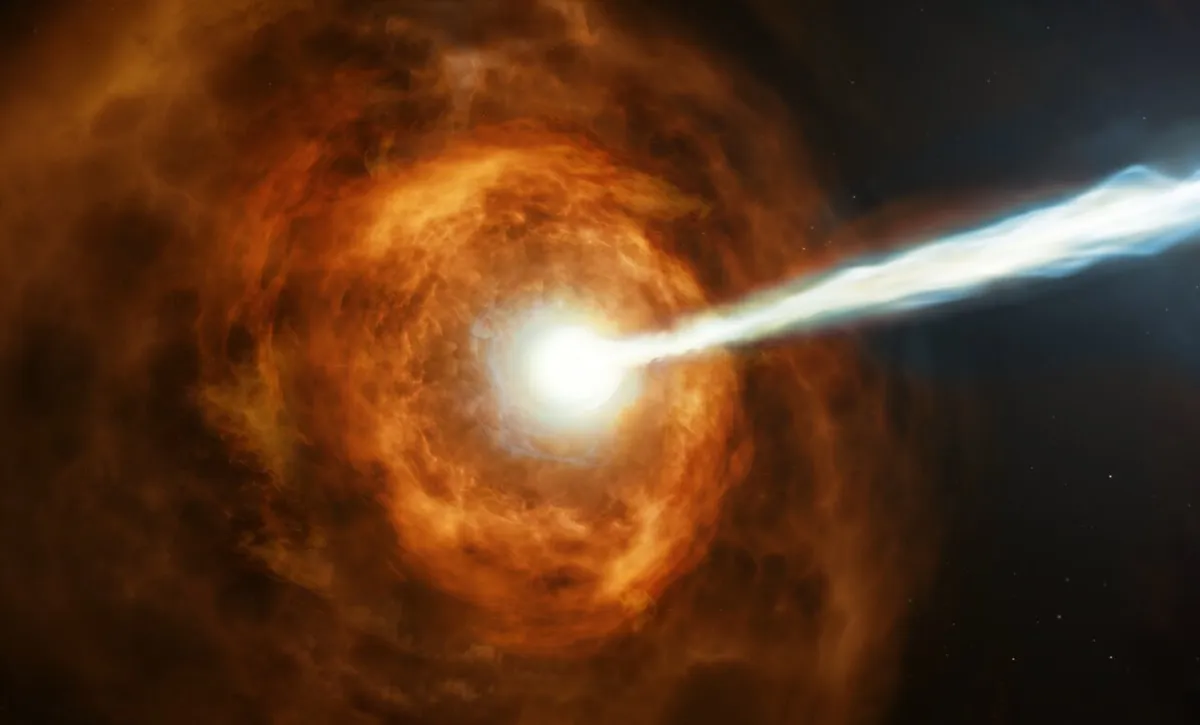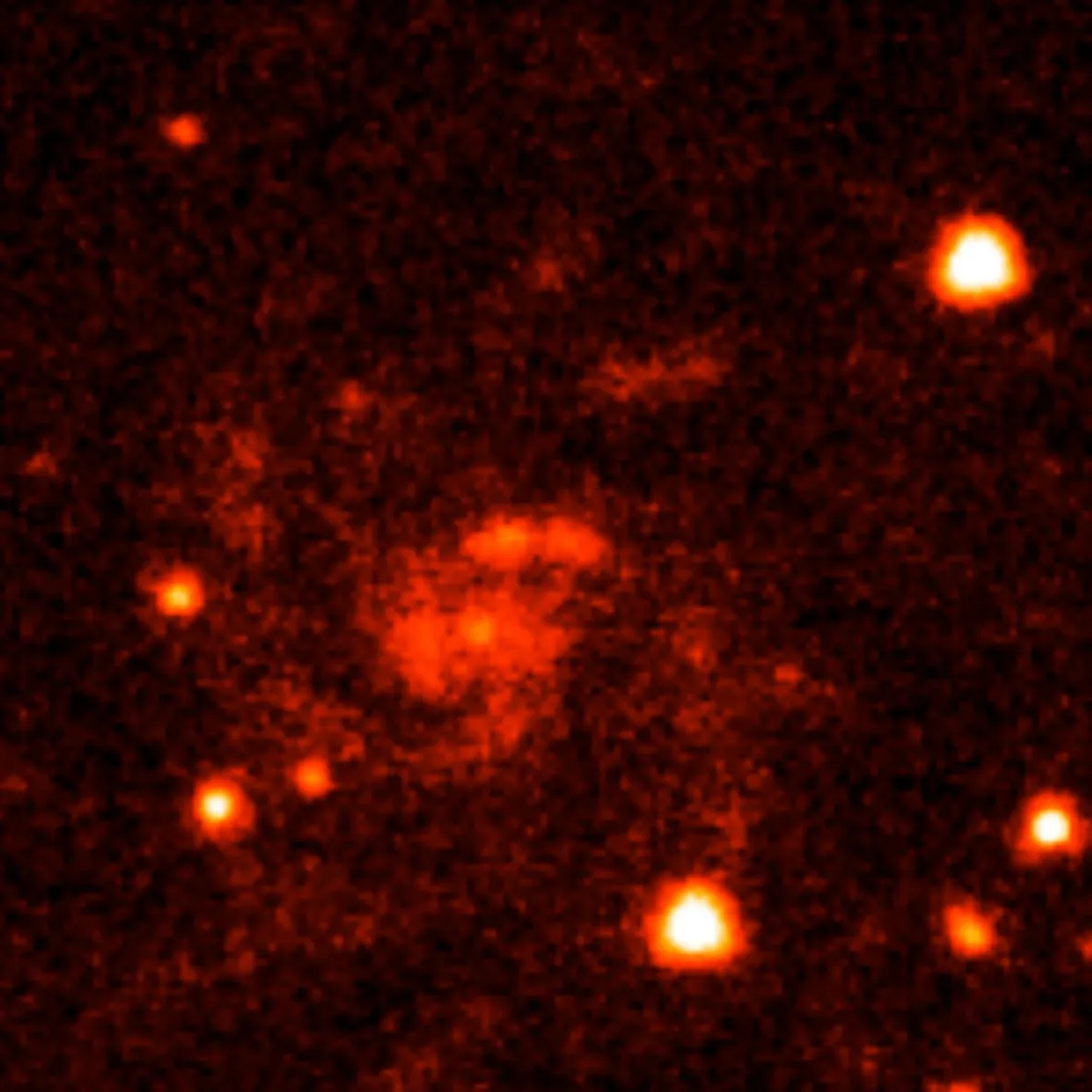A flash of radiation called a gamma-ray burst (GRB) that swept across Earth last year was the brightest on record, astronomers have recently been able to confirm.
Seen on 9 October 2022, it’s believed such blasts only occur once every 10,000 years.
The event is called GRB 221009A (ringed in the image above), though it has been nicknamed the BOAT – the brightest of all time.

GRBs are thought to be created when a large star’s core collapses to form a black hole, which then quickly ingests the gas surrounding it before blasting the material out at near to light speed.
These jets emit powerful gamma and X-rays that can cross the Universe.
Observatories around the world look out for these signals as they pass over Earth, but the BOAT was so bright it over-saturated most of them.
Fortunately, NASA’s Fermi Gamma-ray Space Telescope made out the burst, revealing it was 70 times brighter than any previously observed.
Its light has been travelling for around 1.9 billion years, making it one of the closest ever detected.

"Being so close and so bright, this burst offered us an unprecedented opportunity to gather observations of the afterglow across the electromagnetic spectrum and to test how well our models reflect what’s really happening in GRB jets," says Kate Alexander from the University of Arizona.
It will allow astronomers to study what produces black hole jets, the process of which is not well-understood, but may be driven by the black hole’s magnetic field.
One piece of the puzzle is missing, however: there is no sign of the supernova that created the black hole, possibly due to dust in the Milky Way blocking its light.
"We cannot say conclusively that there is a supernova, which is surprising given the burst’s brightness," says Andrew Levan from Radboud University in the Netherlands.
"If it’s there, it’s very faint. We plan to keep looking, but it’s possible the entire star collapsed straight into the black hole instead of exploding."
Is GRB 221009A really the biggest gamma ray burst of all time?

Impressive though GRB 221009A was, and valuable in understanding these spectacular events and the physics of black holes, it has a way to go to claim the title of the BOAT – or even to claim to be the BOAOHH (brightest of all of human history).
Ice deposited in Antarctica shows beryllium dating from the same time.
According to a 2013 paper, both of these phenomena are explained by the arrival of a burst of high-energy cosmic rays associated with a gamma-ray burst in our own Milky Way.
If only we’d had gamma-ray telescopes in the 8th century, GRB 221009A would be firmly in second place.
